I’m just back from a few days in the Red Sea resort of Eilat at the southern tip of Israel. I was there for some winter sun, but I knew there were some birds around, and on the last day I returned to a spot near an outfall into the sea where I had seen herons fishing.
So how did it go? Fair, I would say.
What was my equipment? Well, my trusty Canon 7D Mk I with my Tamron 70-300mm SP. On my crop-frame camera, this is equivalent to 480mm on a full-frame.
What I remembered about photographing birds:
- best time is within 2 hours of sunrise or sunset when the sun is low and the light golden – tick
- get the sun at your back – tick-ish
- set your shooting mode to AI Servo – this means I can fire off my camera at about 7 frames per second for 3 seconds – tick
- you must have the the eye in the picture – tick
- you must be pin sharp – hmm
- the bird should be in profile or turned towards you – tick
- shoot loads of pictures – I shot about 400 in 20 minutes and I had about 10-20 good ones – tick
What I was not so good at:
ISO – I thought I should shoot at ISO 100 but this meant that my fastest shutter was around 1/160th second at f5.6 which is full open on this lens.
What I should have done was to allow my ISO to go up to about 400 or even 800 so I could freeze both movement and my own camera shake better. However, this lens gives me about 3 stops of image stabilisation so my 160th is more like 1/600th of a second. With ISO 200 that would be equivalent of 1/1200th and with ISO 400 1/2400th which should be pretty good for most walking birds and ok for birds in flight hand-held. However, higher ISO on a crop-frame camera means a lot more noise than on a full-frame, but with the right software, that can be pretty much eliminated.
Exposure – a lot of these birds were white and I should have used 1-2 stops of compensation to expose for the plumage not the general scene – so a few of my white birds lacked detail in the blown-out highlights.
What I have I learned? I need a 400mm or greater lens. I can’t use a tele-converter with this lens and it is only good for large birds which are about 20 meters away or closer. Beyond that means I have to really crop hard and that means unsharp images. But, hey, I need a lot more practice first before I contemplate spending several hundred pounds on a gi-normous lens.
I really didn’t do that badly. So let’s see some examples good and not so good and let’s look at why some images are better than others.
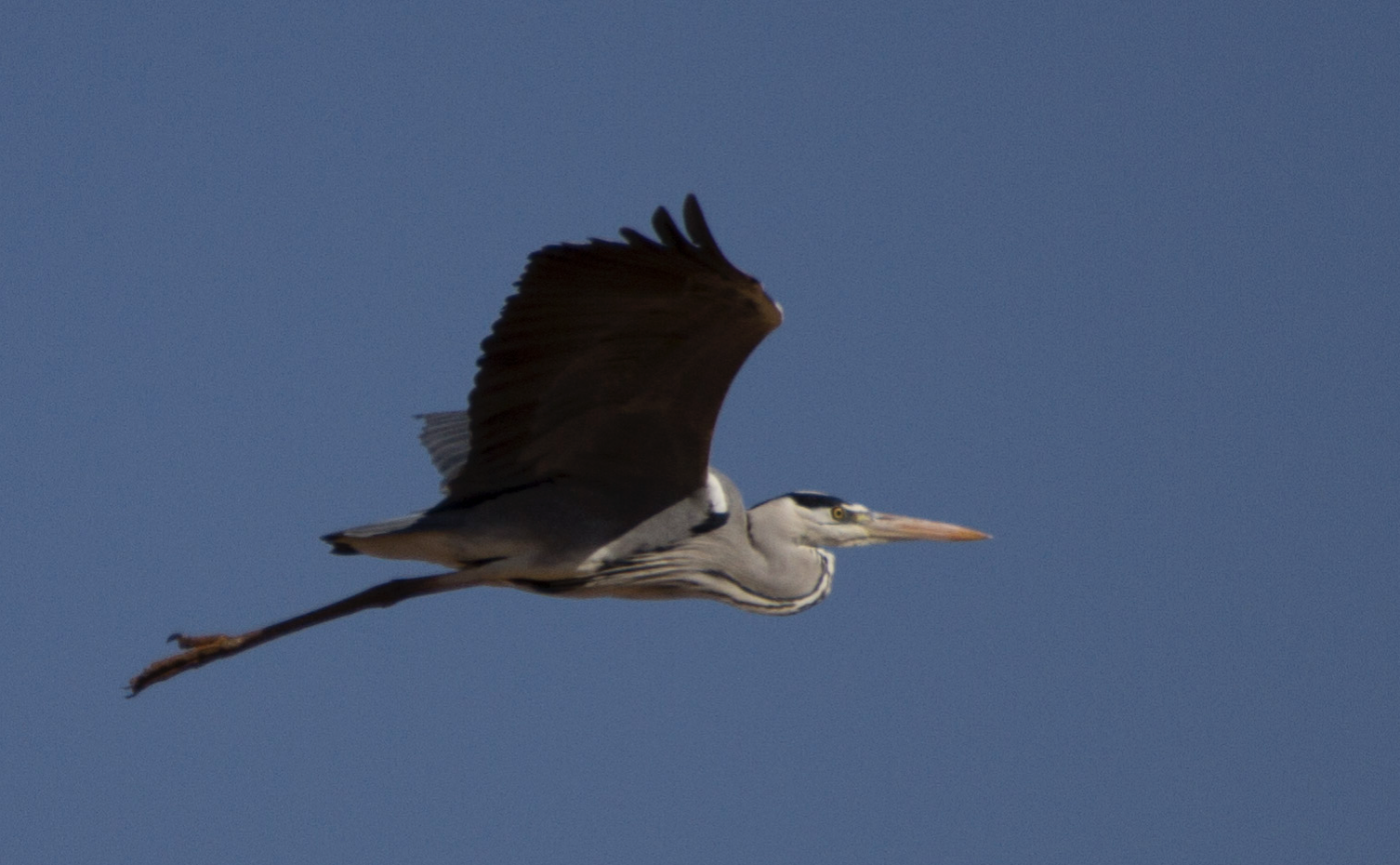
This is the best of whole series of this Grey Heron in flight I took a couple of days earlier in full sun. You see the problem with shadow. This is also an extreme crop because this bird was about 100 meters away. One of the problems with taking birds in flight is tracking and keeping in focus. My years as a bird watcher seems to have helped me have the ability to intuitively find the bird in the sky when raising the camera to my eye, just like a pair f binoculars. So although this is a nice shot, there are many issues – I could try to sharpen it and remove the noise in the blue sky which can be clearly seen here due to the extreme crop. On the positive side, I stopped the motion and it’s a nice view of this common but ever impressive bird.

I believe this is a Mediterranean Gull in winter plumage. Again, I took several shots as this birds swooped over the shore and then came toward me. This crop is not as extreme as the previous shot but this is a much smaller bird. Also, note once more, most of the bird is in shadow because the sun is behind it. Ideally, I should have been between it and the sun. Nevertheless, it’s not a bad shot of quick-flying bird. There’s no catch light in the eye which is really required for a pro-level bird shot. Reason? That sun being behind the bird. Also, wrong time of day. This was about 3 hours after sunrise.
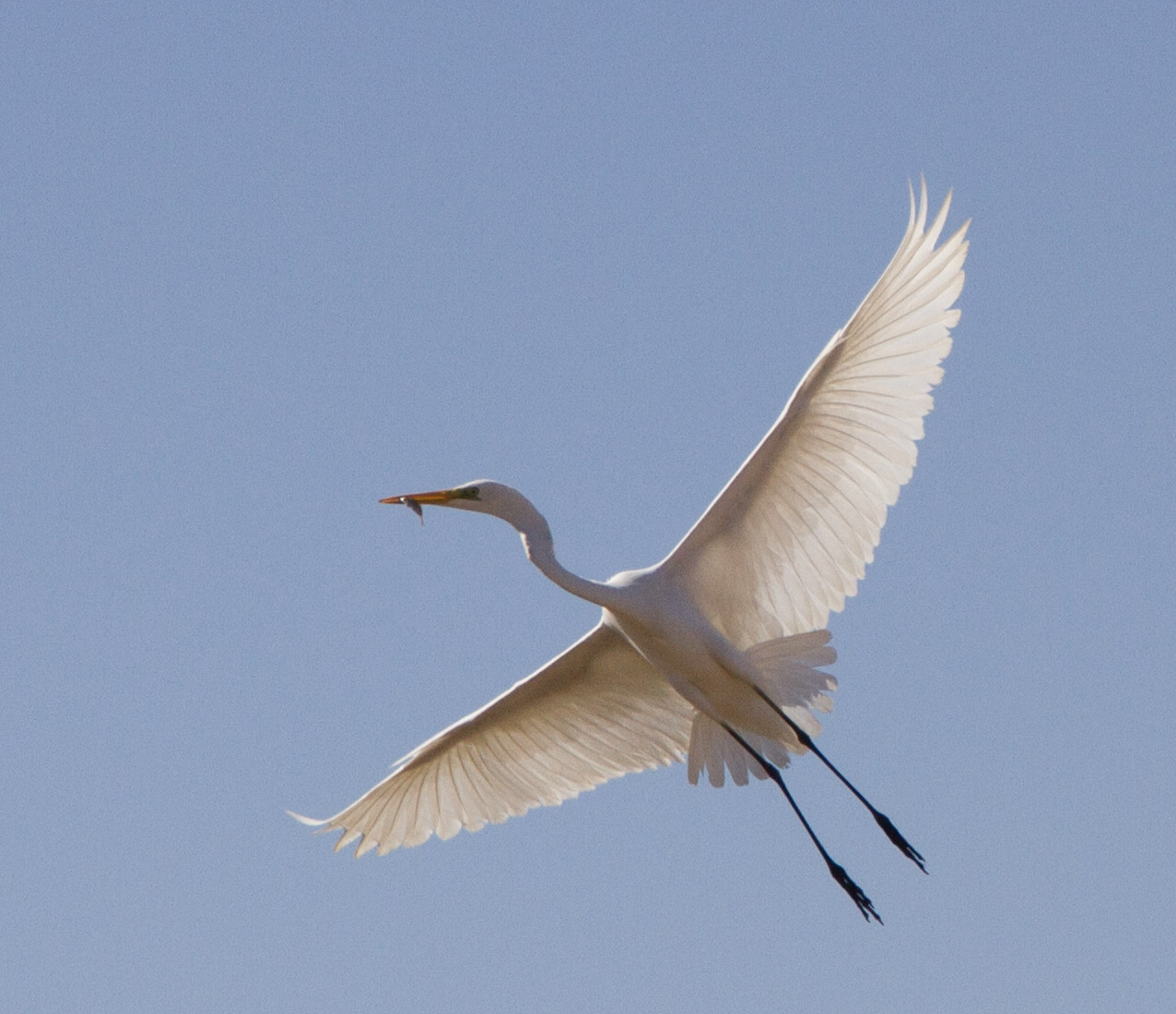
This is the most extreme crop I shot and the problems are similar to the previous two. However, the bird, a Great Egret, has a fish and a nice wing spread. Shooting against the light means you get the transparent effect of the sun through feathers, but if I were 4 times closer it would have been a much sharper picture.
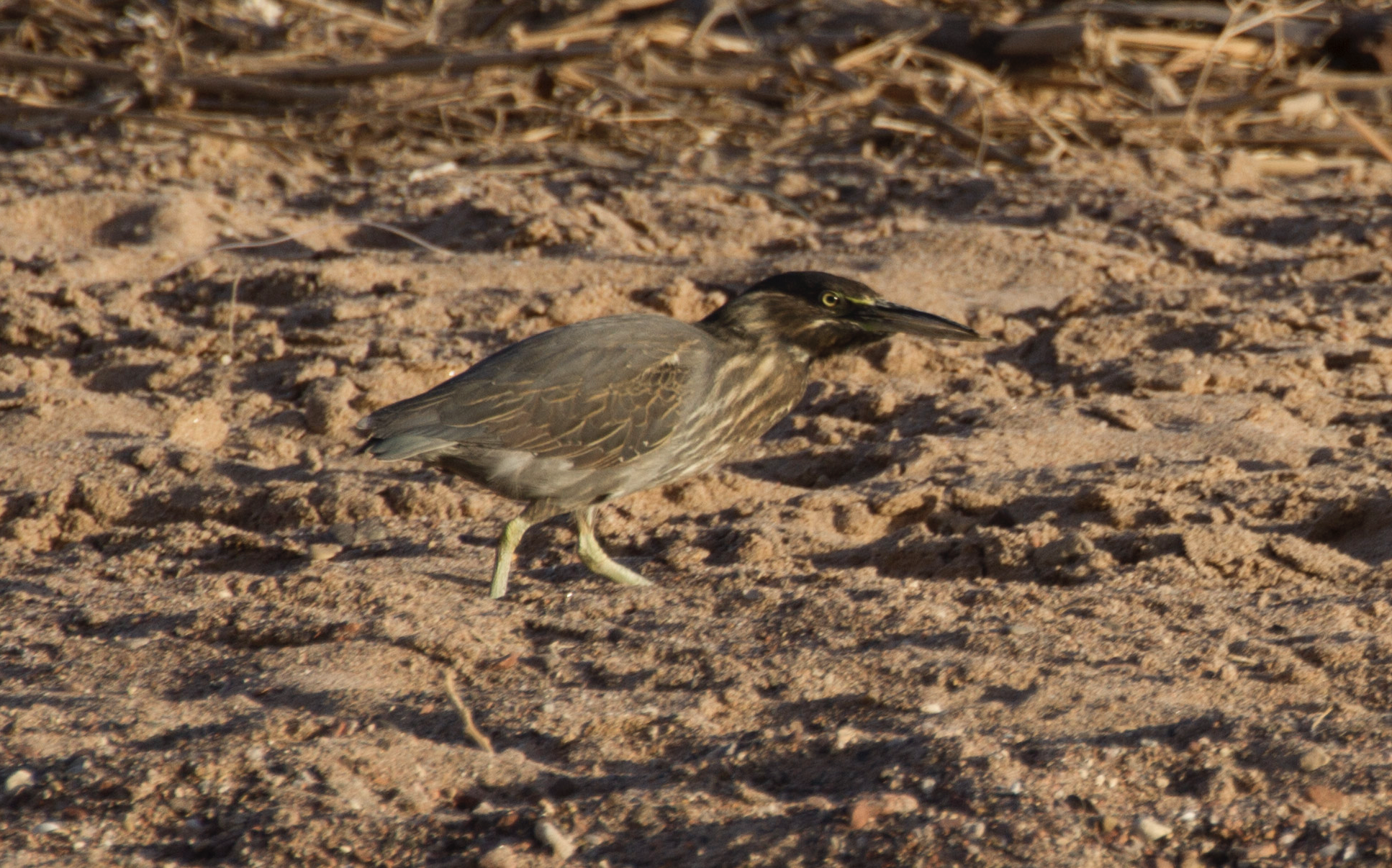
This is a Striated Heron, much smaller than the other herons and egrets I photographed. Here it is against a background which is not ideal. But the sun position is just right, I have the catch light in the eye and it’s fairly sharp. Again, a big crop to get it this big and a greater focal length would have produced a better picture. With a dark bird, you really want a contrasting background.
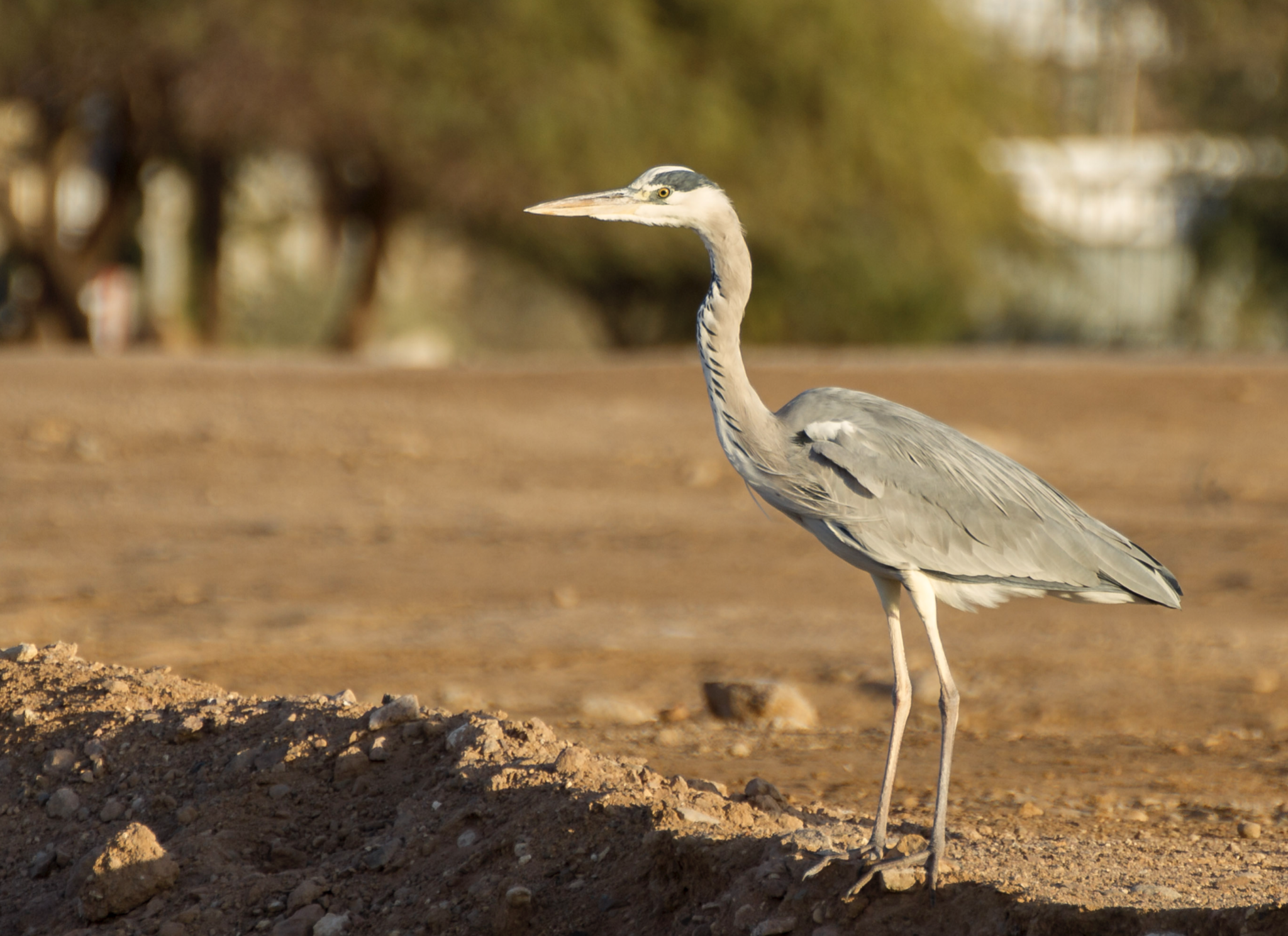
Not too much wrong about this image of a Grey Heron. Maybe it’s a little boring. These birds are much better in flight.. But the light is good, it’s pretty sharp, not too great a crop, background out of focus.
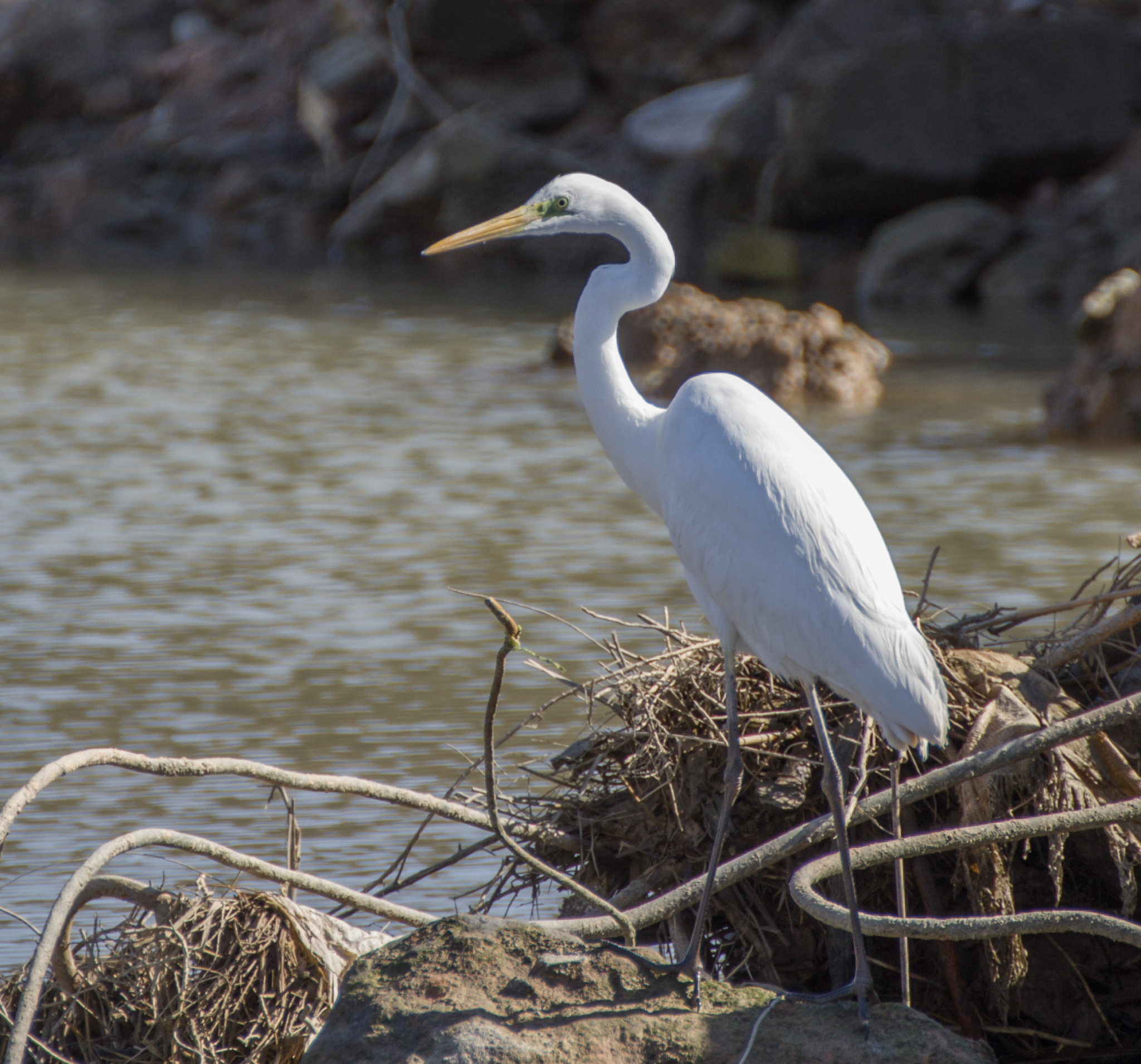
This is a Great Egret on the ground. I would say the the exposure is wrong and it could be sharper with a faster shutter. The light is quite good. A nicer setting would improve the shot. This is also not too large a crop. This is where a 400mm lens would be much better and reduce noise and increase sharpness but I think a faster shutter would have been even better here.
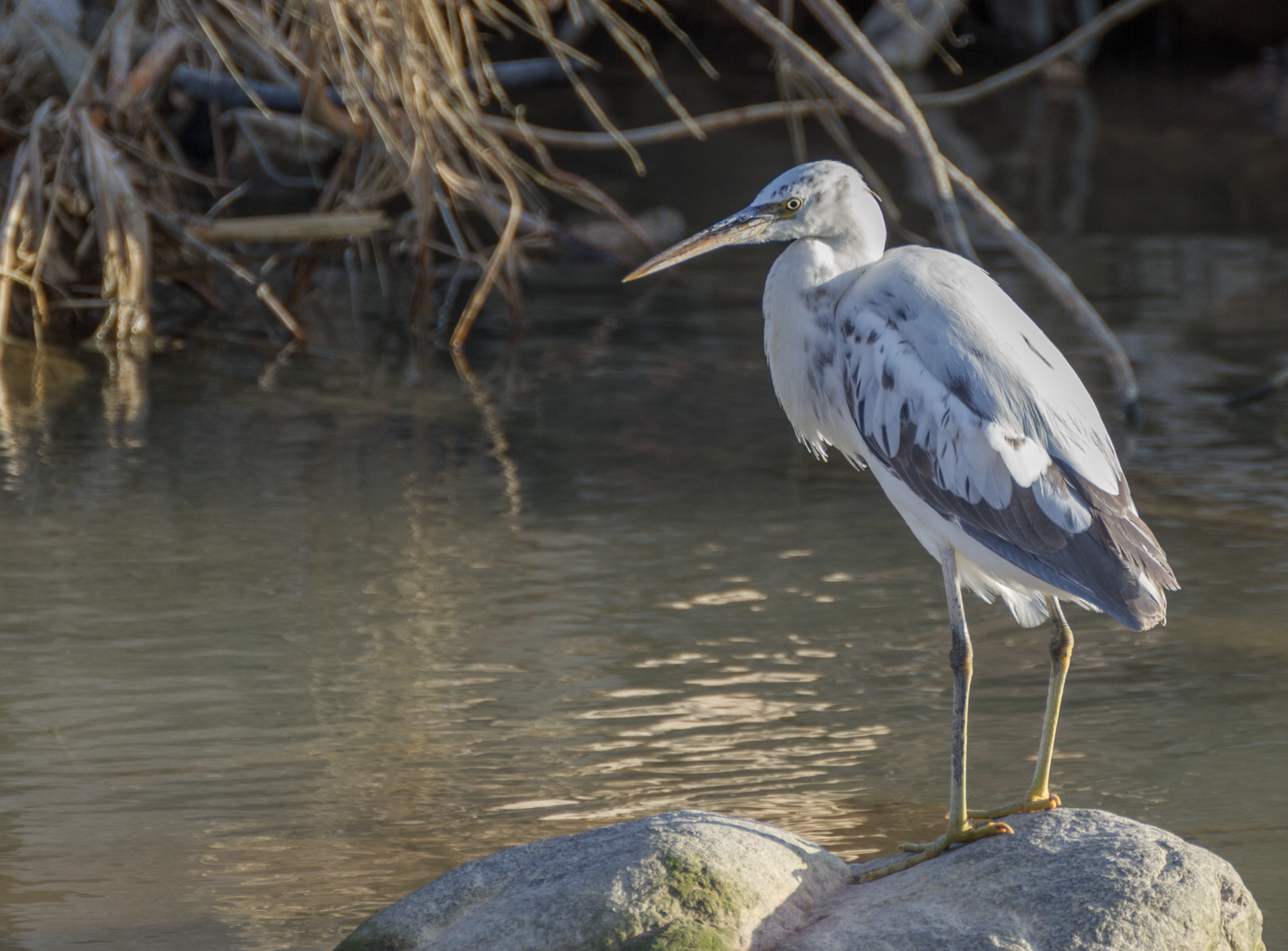
This is a light form of the Western Reef Heron and I think this is good shot but I could have done better with the exposure – the plumage is blown out where the sunlight hits its back.

I took a series of this bird eating the fish. This was the best but there are problems. Firstly, I don’t have the sun behind me – this a 50-50 shot with the sun at 90 degrees to me. Second the shutter speed is too slow, so the thrashing fish’s tail is blurred. But at least there is a story here and it’s not that bad, just not pro-standard and I seek perfection!
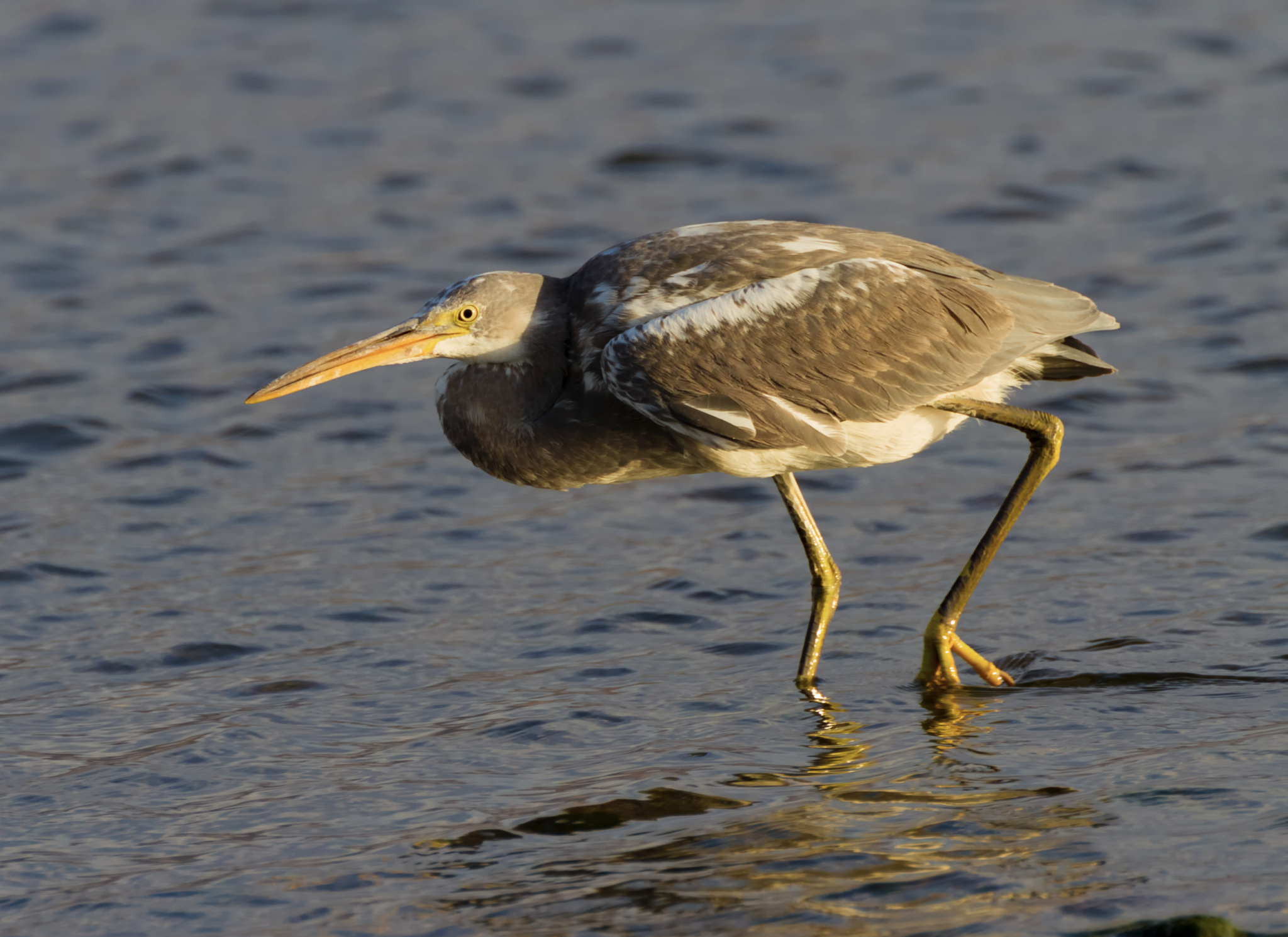
Finally, the money shot! The best bird photo I have ever taken. This is the same individual as the previous photo, a dark form Western Reef Heron which approached within 20 metres. This is a crop but not a very big one. The image is pretty sharp, the light is in the almost the right place. The main issue is the hard shadow caused by the bird’s shoulder and back on its face. If the bird and I were turned about another 60-90 degrees it would have been perfect, but heigh-ho, I’m pretty pleased with it and I could probably reduce the hardness of the shadow line with some judicious post-processing.
Considering this was my first attempt at serious wildlife photography after 50 years as a photographer and 40 years as a bird-watcher, I think the old guy did pretty good, but I’d like to do better. I think bird photography might be my thing but it’s not every day you are on the Red Sea. Bird photos in the UK are much harder because the light is usually weaker and the birds more aloof. I learned a lot, though, and it gave me an appetite for more.